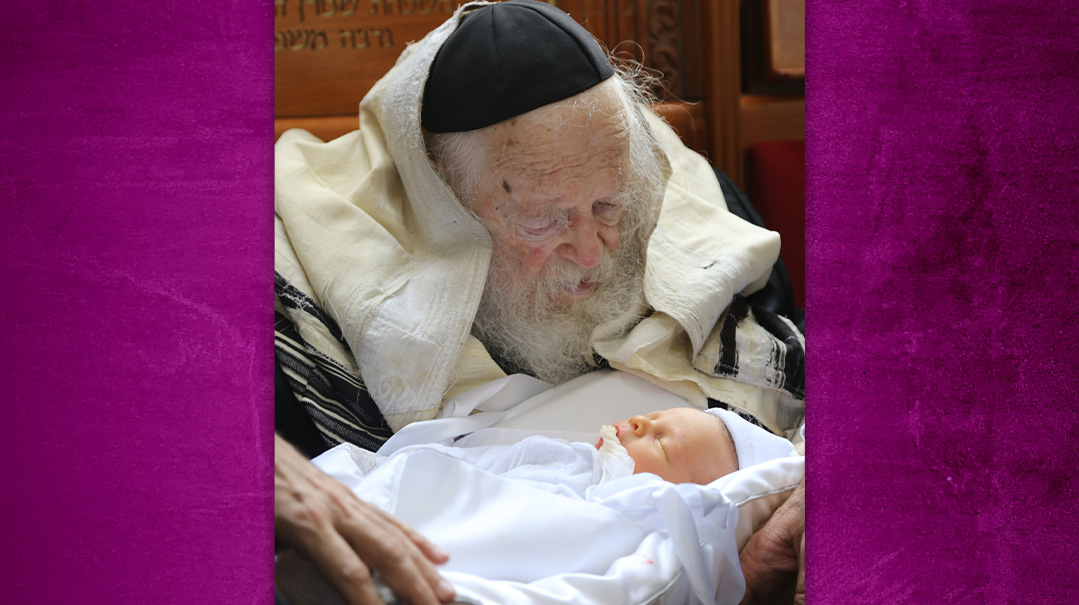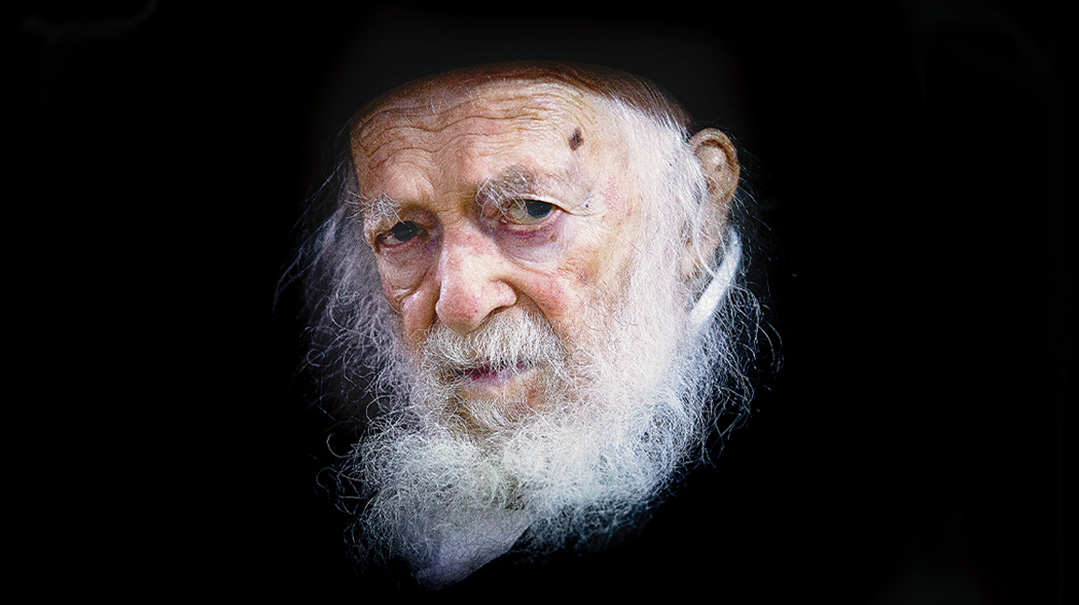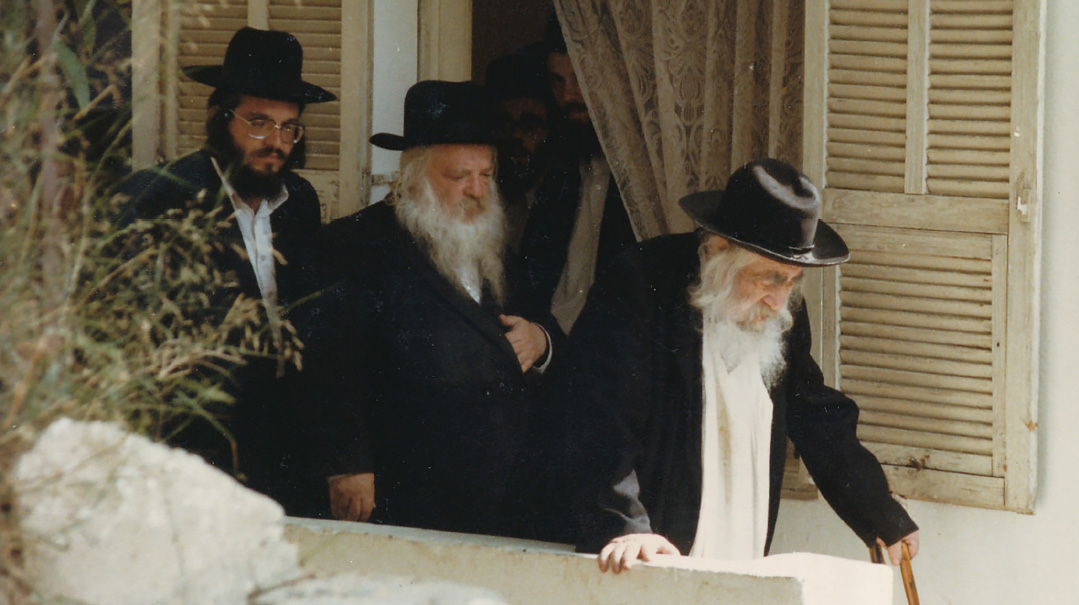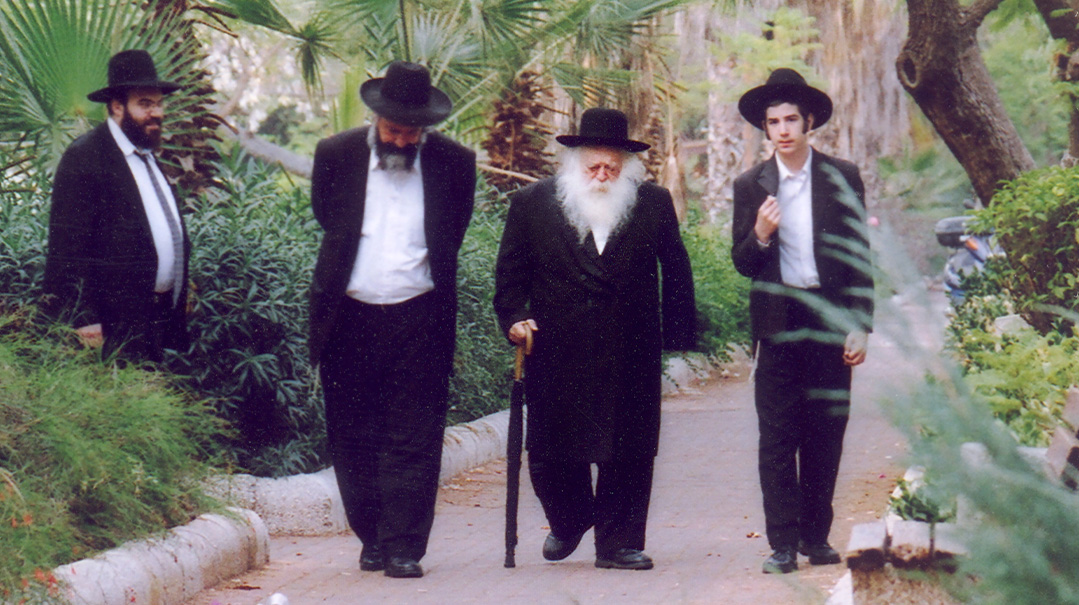He Knew Everything
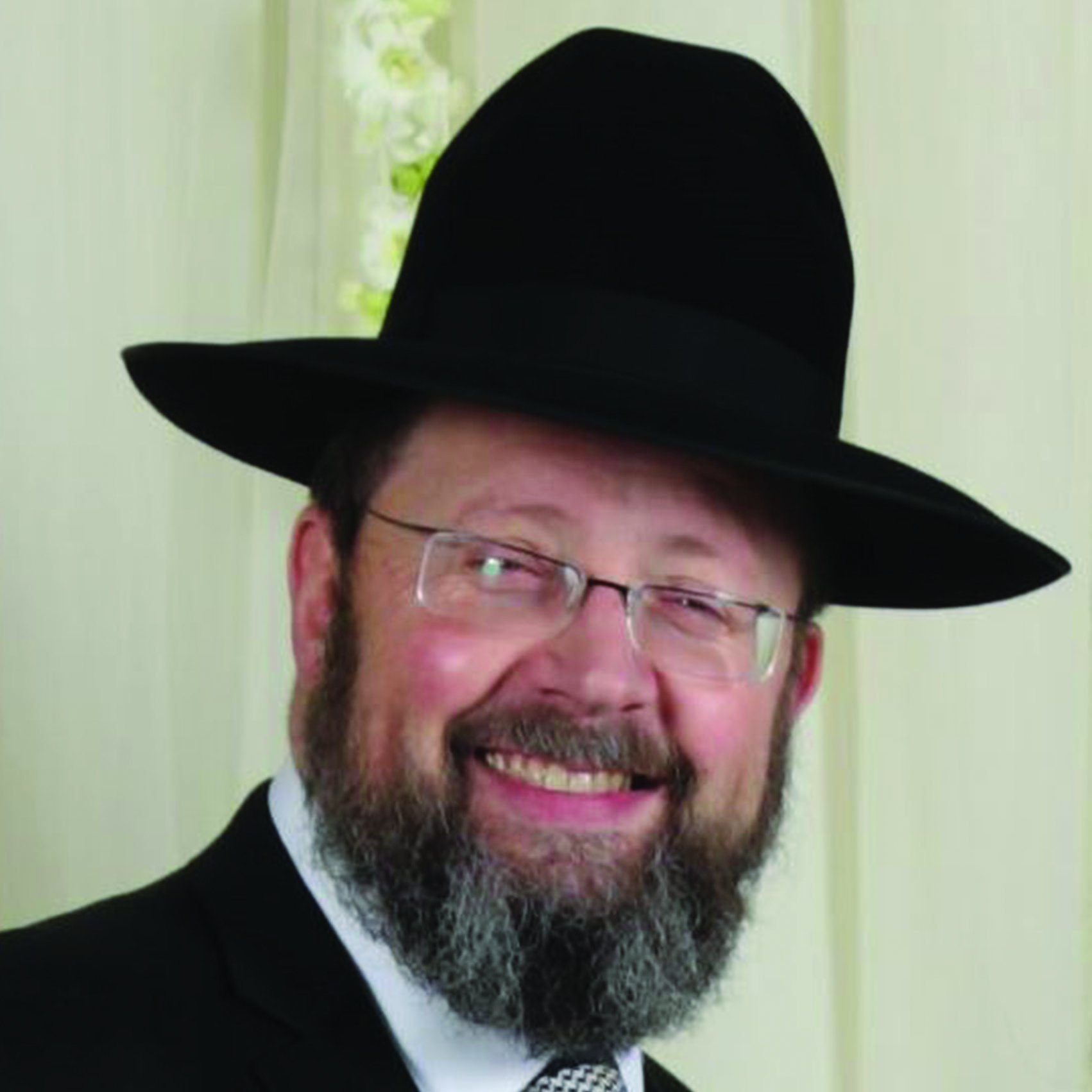
It is impossible to feel the impact of Rav Chaim’s brilliance unless one experiences it firsthand
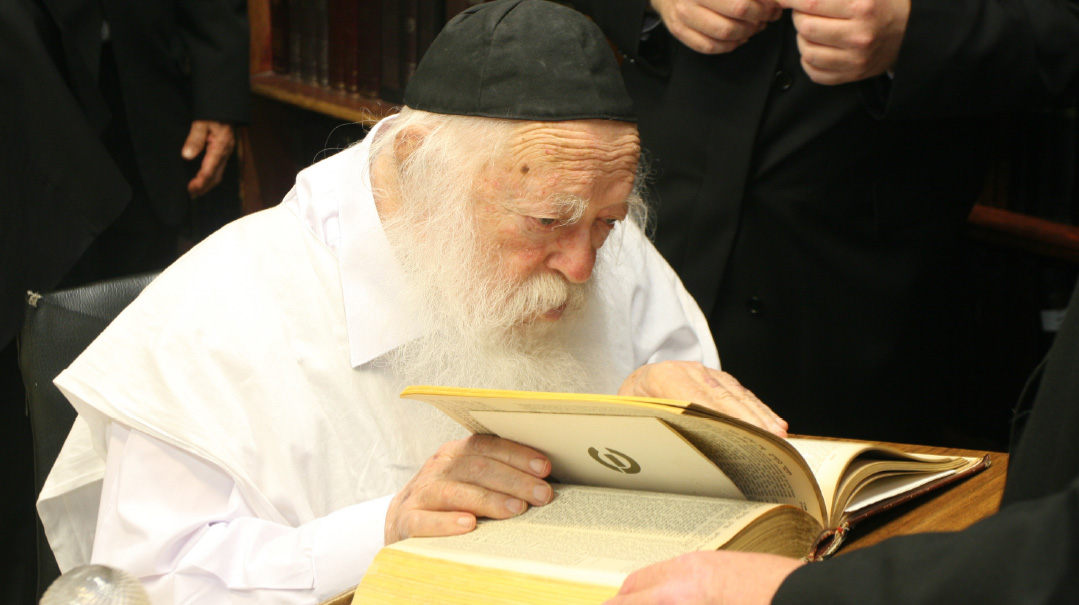
Photo: Mattis Goldberg
Rav Chaim’s vast knowledge could be compared to a hard drive with incredible storage facilities. But there was something a computer could never achieve: His utter clarity and mental organization of every possible subject
Decades ago, in Kollel Chazon Ish, it was customary for the avreichim to take turns delivering chaburos.
There were some brilliant avreichim there who presented complex chaburos built on creative and innovative reasoning. But when came the turn of a young Rav Chaim Kanievsky, he would read two blatt of Gemara and explain them with simple, perfect clarity. No intellectual acrobatics, no dazzling novellae, no soaring climax.
Once, a group of avreichim were learning with the Chazon Ish, and they showed a lack of regard for his prized nephew’s emphasis on clarity and bekius — a straightforward mastery of the breadth of the Torah.
“You are belittling him now,” the Chazon Ish replied, “but ultimately, when you don’t understand a particular Gemara, you will all seek him out — because without Rav Chaim’s vast knowledge, you will have no way to understand what you are learning.”
It’s common knowledge that Rav Chaim knew all of Torah, but what does that mean? What kind of mastery includes “everything”?
In fact, it is impossible to feel the impact of Rav Chaim’s brilliance unless one experiences it firsthand — but it is well worth the effort. Because when you go through a sugya and you then read Rav Chaim’s works, his absolute command of the material is breathtaking. Otherworldly.
Rav Chaim’s bekius was in fact unparalleled. He achieved mastery of every part of Torah and could locate sources with lightning speed.
The periodical Yeshurun, in a piece focusing of Rav Nachum Partzovitz, the late rosh yeshivah of Mir, relates the following incident: Rav Nachum was once walking through the beis medrash and two bochurim who were schmoozing saw him approaching. To cover for themselves, one of them looked in the Gemara Nedarim they were learning at the time, and started reading aloud, “Tanu rabbanan,” a standard phrase found countless times throughout Shas. Rav Nachum stopped and told them that the phrase “tanu rabbanan” is found nowhere in Maseches Nedarim.
The story was recounted to Rav Chaim, who smiled and said that this is true; however, the masechta does include — just once — the words “detanu rabbanan.”
Back when it happened, the incident made the rounds and was recounted to Rav Aharon Leib Steinman, who explained with a mashal. Say you walk into the local hardware store that carries all sorts of items, including many odds and ends. Nobody knows where anything is except the store owner, who knows where everything is — because, after all, it his “eisek,” his business. To Rav Chaim, Rav Steinman explained, the entire Torah was his eisek… and was therefore at his fingertips.
That intimate familiarity with every detail of Torah stood in contrast to his utter lack of involvement in things that were not his eisek. His grandson writes that he was once asked whether eating hummus and techinah on Erev Yom Kippur is problematic (presumably the questioner was concerned about these foods generating saliva).
He responded, “Eini yodea mah zeh — I have no idea what these things are.”
You might think that he would have been somewhat familiar with these staples of the Mediterranean diet. But his eisek, his reality, was Torah alone.
Many have heard the incident with the Lakewood photographer who, as a bochur, took a photo he would regret.
Back when this photographer was a young man visiting Eretz Yisrael, he observed Rav Chaim in shirtsleeves feeding a cat in the predawn hours. Rav Chaim motioned that he did not wish to be photographed, but the bochur got lost in the moment and snapped the shutter. Rav Chaim reproached him, calling him a mechutzaf, so the photographer opened his camera, exposed the film, and then took off.
Twenty-five years later, he went with his bar mitzvah son to receive a brachah from Rav Chaim. As the line slowly progressed, the father and son anticipated the requisite buha and that’s it.
However, when they walked in and Rav Chaim saw them, he exclaimed, “Where have you been? I’ve been waiting for you for 25 years to ask mechilah!” He then proceeded to schmooze with the father and son for 15 minutes.
But there is a postscript to the story. A month or so later, the photographer decided to once again visit Rav Chaim. He was expecting a great baruch haba, but in fact Rav Chaim did not even recognize him, and he instead received the simple buha. The Torah reality of having to ask mechilah had been addressed, and the matter was now out of mind.
***
Rav Chaim’s mastery of Torah was such that he could state confidently not only where a certain thing was, but also that something could not be not found anywhere.
Rabbi Menachem Silber, a longtime ArtScroll editor, relates that he was once investigating whether there is any instance in which Chazal report on the actual performance of the eglah arufah ritual. He could not locate a source, and then checked Rav Chaim’s sefer, Nachal Eisan. He found there confirmation (pg. 299) that on the one hand, there is no explicit report of an eglah arufah, but on the other hand, Rav Chaim infers from the language of the Mishnah in Sotah (9:9) that the eglah arufah ritual must have occurred at one time.
Another acquaintance of mine once wrote to Rav Chaim inquiring whether there was any source for the report that the stones of the shuls in chutz l’Aretz are somehow sourced in the Beis Hamikdash. Rav Chaim responded that there is no source anywhere in Chazal, but something similar is found in Iggeres Rav Sherirah Gaon.
A third fellow wrote to Rav Chaim asking whether there is a source that a pomegranate has 613 pits. The response: It can be found nowhere aside from a Malbim on Shir Hashirim.
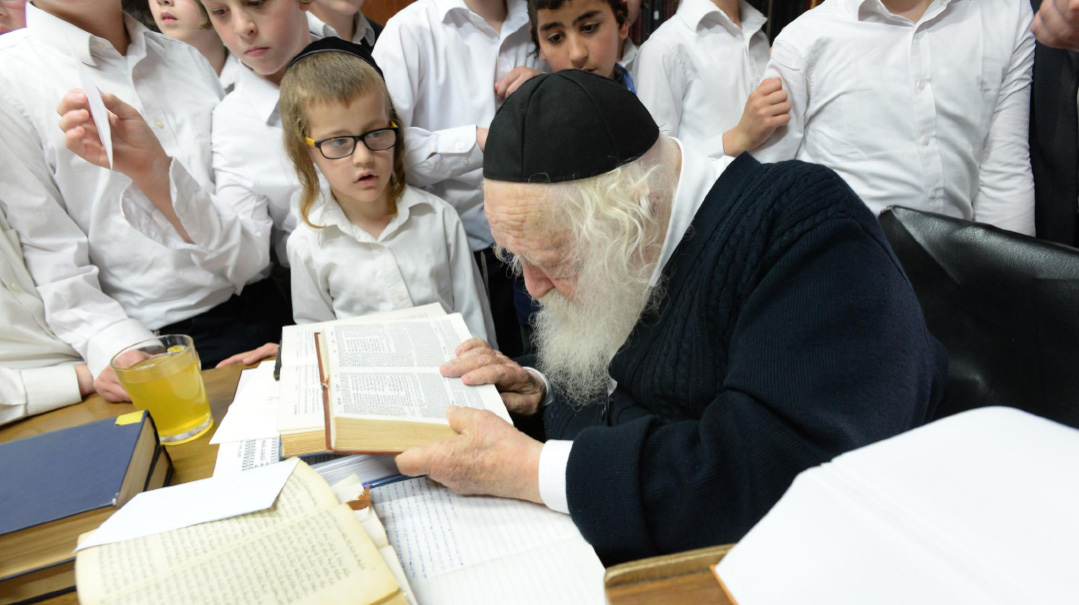
Photo: Shuki Lerer
Yet all this merely conveys encyclopedic knowledge — the human equivalent of a hard drive with incredible storage facilities. It fails to communicate a much more impressive facet, that which a computer could never achieve: Rav Chaim’s utter clarity and mental organization of every possible subject.
His focus on bekius did not come at the expense of a deep, probing understanding of the topic at hand. It was never one at the expense of the other: He was able to achieve both, and did not rest until he fully comprehended every word, every concept, every scientific or mathematic or legal principle that he encountered.
I had the zechus of participating in the elucidation of the recently completed Schottenstein Talmud Yerushalmi. The masechtos of Zeraim were particularly complicated and involved, and also unfamiliar, because in the main, we do not deal with its topics in our daily lives. Rav Chaim’s five-volume, encyclopedic Derech Emunah was an essential resource to the entire team of writers and editors.
As anyone who has had the merit of learning this sefer can attest, the work is staggering, both in its breadth and depth. Rav Chaim’s grasp and command of the most intricate and complicated sugyos is difficult to convey in words. Go through a complicated sugya in Peah, say, and then learn Derech Emunah, and you’ll see exactly why Rav Chaim was held in such awe by talmidei chachamim.
One tiny example: There is a famous machlokes whether terumos and maasros apply to dagan, tirosh, and yitzhar — grain, wine, and oil — only, or to other produce as well. Rav Chaim in Hilchos Terumos (ch. 2:1) asserts that most Rishonim hold the frmer view, and then over the course of 15 lines of small letters in the Shaar HaTziyun (ad loc.), he cites seemingly every Rishon who weighs in on the topic. Presumably, he wrote from memory; one cannot imagine him paging through various volumes to find all these sources — and as such, his command of the information is staggering.
But perhaps even more impressive is the Biur Hahalachah ad loc, in which he explicates the sugya itself, in an in-depth discussion over the course of two full pages. This example of his awesome mastery of the sugyos can been seen hundreds if not thousands of times throughout Derech Emunah, Nachal Eisan, and so many of his seforim. His grasp and mastery of the entirety of Torah simply cannot be overstated.
It should be noted that so many of his seforim deal with topics that had no “mesorah.” Unlike the Mishnah Berurah, which deals with sugyos that had been clarified and reworked consistently over the millennia, Rav Chaim was at times working, for all intents and purposes, “in the dark.” For instance, the commentaries on Zeraim include a few perushei Mishnayos from the Rishonim, Yerushalmi with scant meforshim (and no Rishonim), and the Rambam. After that, the trail grows cold, basically until the Aruch Hashulchan Ha’asid, the Peas Hashulchan, and the Chazon Ish. Yet it’s with these meager resources that Rav Chaim composed his magnum opus, Derech Emunah.
The same applies to his other much-heralded work, Nachal Eisan, where again he was working in the dark, and yet wrote a practical Shulchan Aruch covering every possible scenario of the mitzvah of eglah arufah.
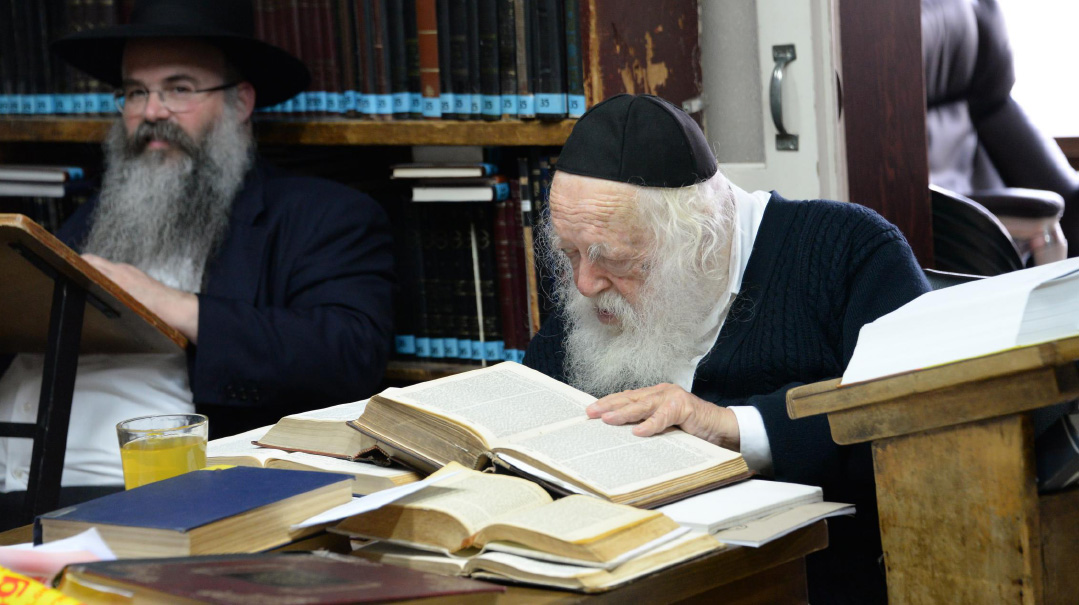
Photo: Shuki Lerer
Rav Chaim’s passion for thorough mastery caused him to spare no effort to reach the bottom of every matter he studied. We all know how that when he wrote on chagavim, he examined locusts to understand their anatomy. When he wrote on kiddush hachodesh, he traveled to Slabodka Yeshivah to study astronomy with the younger Rav Moshe Hesgel, the author of Maggid Harakia. Professor Saul Lieberman was so impressed with the scholarship of Rav Chaim’s writings on the Masechtos Katanos that he nominated him for the 1970 Rothschild Prize.
And that exhaustive, comprehensive scholarship is evident in each of the more than 30 seforim he authored, including but not limited to: Derech Emunah (on Zeraim, five volumes), Shoneh Halachos (a systematic presentation of Mishnah Berurah); Shekel Hakodesh (on the laws of kiddush hachodesh and machatzis hashekel); Orchos Yosher (Chazal on Ethics); Nachal Eisan (on the laws of eglah arufah); Ta’ama D’kra on Chumash; Baraisa of Maseches Tziziz. Avadim, Kusim etc.; Yishuv Hada’as, (in which he answers all the questions of the Maharsha on all of Shas. This sefer was written when Rav Chaim was 16 years old); Siach Hasadeh (three volumes that include seforim and kuntrusim that Rav Chaim published over the years); Shaarei Emunah (three volumes in which he explained the Rash and Rambam on all of Seder Zeraim) and so many more.
When we contemplate the sheer hasmadah necessary to maintain such constant mastery over the entirety of the Torah and such output, we are even more amazed and appreciative of the sacrifice Rav Chaim made to greet the tzibbur for so many hours a day, when he really wanted to return to his learning.
A friend related that once, when Rav Chaim offered a brachah to one of the supplicants who’d visited his home, the fellow told Rav Chaim, “Aval HaRav kvar hivtiach lifnei shanah — the Rav already promised me a year ago [and the yeshuah has not arrived].”
Rav Chaim smiled and with a twinkle in his eyes said, “B’emes? Az teitzei lachutz v’taggid lahem —Really? Then please go outside and tell them (how my brachos don’t work)!”
It brings to mind a quip I recently heard: The real stories about Rav Chaim are about a person who spent a lifetime completely immersed in Torah; all the other stories are about the people who disturbed him.
In fact, the “ruach hakodesh,” the “mofsim,” were a mere upshot of someone to whom the real reality is chochmas haTorah. Everything else was the inevitable byproduct. Because the world in its true essence is devar Hashem, the embodiment of Hashem’s will — and the tzaddik who masters the code of the world by mastering Torah is thus one about whom Chazal say, “the tzaddik commands and HaKadosh Baruch Hu fulfills.” Rav Chaim mastered the code, so the world responded to his word. •
Response on Wings
Rav Chaim’s sefer Karnei Chagavim gained special renown because of a specific incident that occurred during its writing.
As he wrote the sefer, Rav Chaim struggled to understand certain things about the locust. When he learned about mathematical principles, he consulted a math expert, and when he learned about astronomy, he found an expert in that field. Who could help him now?
Suddenly, a locust appeared on the open window of the room where he was writing. The creature jumped onto the table and stood before Rav Chaim, who lifted it up and studied it carefully. Satisfied with his new knowledge, he resumed writing — and the locust promptly disappeared.
After a while, again, another question arose — and again, the locust appeared on the table in Rav Chaim’s room.
Rav Chaim alludes to the incident in the sefer. In a description, he notes once that “and I heard this in the name of science books,” but in another place, he writes “and I saw” — because he did in fact see it with his very own eyes.
When his generally reserved father-in-law, Rav Elyashiv, heard the story, he confessed to being very moved. This story, he said, was the fulfillment of the words of Chazal that “anyone who learns lishmah — zocheh ledvarim harbeh, merits many things.”
Rav Chaim Kreiswirth ztz”l, the rav of Antwerp, was a close friend of Rav Chaim. During a visit, he dared ask Rav Chaim, “S’iz emes, is that story with the locust really true?”
And Rav Chaim replied, “Doh, offen tish — here on this table.”
(Originally featured in Mishpacha, Issue 904)
Oops! We could not locate your form.


